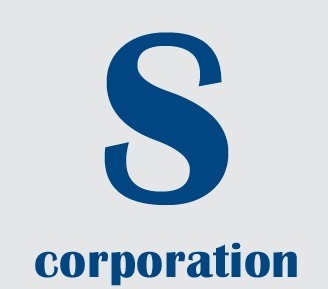Disclaimer: Our content is for informational and educational purposes only, It's not intended to be a substitute for professional legal or tax advice. Our work is supported by affiliate commissions. We may earn money or products from the companies mentioned in this post.
Starting a company can be an intricate process. Among the several aspects that you should consider carefully is the type of business entity to establish, be it a sole proprietorship, a general partnership, or a corporation. In case you would go for a corporation, you might encounter the terms C corporation and S corporation along the way. So what are they? And what is the primary difference between these two entities?
Whether you are just starting an enterprise or making a lot of changes to your business structure, it is vital to know the contrast between each type, a few traits that both entities share, and the most suitable option for your startup.
C Corporation
The majority of existing corporations are formed as C corporations by default, according to the rules of the Internal Revenue Service (IRS). Generally, a C corporation is a separate legal entity owned by shareholders. In other words, the shareholders that own a corporation are not held legally accountable for any actions and liabilities a startup incurs but the corporation itself is. 
S Corporation
Meanwhile, an S corporation is a special type of corporation made possible via an IRS tax election. Eligible domestic businesses can make a valid election to become S corporations, mostly for the sole purpose of avoiding double taxation. In short, taxation applies only to shareholders, not the startup itself. 
How They Are Different
The core difference between a C corporation and an S corporation can be observed mostly in taxation and corporate ownership.
Taxation
Corporate tax returns must be filed by C corporations using the IRS Form 1120 since they are independently taxable entities, and as a result, taxes must be paid at the corporate level.
In case corporate income is allocated to enterprise owners as dividends, which can also be personal taxable income, double taxation will likely happen. Aside from corporate income tax being paid initially at the corporate level, another taxation occurs again, but this time, on dividends at the individual level.
Informational federal tax returns should be filed by S corporations using the IRS Form 1120S.
Since income tax is not paid at the corporate level, the business income and losses are split between shareholders and passed through to their personal income taxes. Shareholders are, instead, the ones being taxed at the individual level. For this reason, S corporations are also considered pass-through entities.
Corporate Ownership
When it comes to organizational control, C corporations cannot own S corporations. This same rule applies to S corporations, too, in which they cannot possess other S corporations (with a few exceptions). Furthermore, limited liability companies (LLC) and partnerships cannot own S corporations.
As far as shareholder restrictions are concerned, C corporations do not have any limitations on ownership. S corporations, on the other hand, are limited to having no more than 100 shareholders. Moreover, S corporation shareholders should be US citizens or residents.
In terms of stocks, a C corporation can have several classes. An S corporation is limited to having only one class of stock, without regard for voting rights.
What They Have in Common
Despite their notable differences, C corporations and S corporations have a few identical qualities as well. These shared elements are comprised of limited liability protection, state filing, formation documents, organizational structure, and corporate formalities.
Limited Liability Protection
The capability of a corporation to provide limited liability protection allows shareholders or owners to bear no responsibility for any debts and liabilities a business may incur, whether it is taxed as a C corporation or an S corporation.
State Filing and Formation Documents
Both C corporations and S corporations are formed through a state filing as independent legal entities. Regardless of a business being taxed as a C corporation or S corporation, the formation documents used to file with the state are the same. Such documents are commonly referred to as the Articles of Incorporation or Certificate of Incorporation.
Organizational Structure
C corporations and S corporations are similar when it comes to organizational structure, with both having shareholders, a board of directors, and officers. Although shareholders own the corporation, the latter owns the business.
Shareholders have complete control over electing the board of directors. The board is responsible for overseeing and providing direction to business affairs and decision making. However, the management of daily business operations is handed over to the officers elected by the board.
Corporate Formalities
It is mandatory for all corporations, be it a C corp or an S corp, to comply with the corporate formalities and obligations internally and externally. Such formalities consist of adopting bylaws, conducting meetings for shareholders and the board of directors, filing yearly reports, and issuing stock.
Besides, state corporation laws do not make any disparity between C corporations and S corporations when referring to compliance responsibilities.
Which Type Is Right for My Business?
If you have a hard time deciding which nature of corporate entity best suits your firm, you should outline your business needs and goals first. Once you have a summary of these important details, you may skim through the following benefits and downsides for each type.
C Corporation
Pros:
- With limited liability, shareholders have their personal assets protected and can only be held liable for their investment in the stock of a business.
- A capital generation or the capacity to raise funds is possible through the sale of stock.
- The prospect of partial ownership via stock options and competitive benefits can attract high-quality employees.
Cons:
- Double taxation occurs in some instances.
- Incorporating takes a lot of time as well as start-up and operating costs.
- There are many record-keeping duties due to federal and state regulations.
S Corporation
Pros:
- Even though members of an LLC are accountable to employment tax on the company’s overall net income, only the wages of the shareholder who happens to be an employee are subject to the same tax, providing tax savings.
- There might be some expenditures that shareholder-employees incur, but they can be written off as business expenses.
- This type of entity enables a company to have an independent life apart from its shareholders, allowing the business to continue its operations even when a shareholder leaves.
Cons:
- The entire operational processes are stricter because of bylaws adoption and updates, records maintenance, scheduled meetings for shareholders and the board of directors, and stock transfers.
- A compensation requirement states that a shareholder must receive acceptable remuneration. In some cases, a higher employment tax could be paid due to an audit with red flags that include a combination of low salary and high distribution.